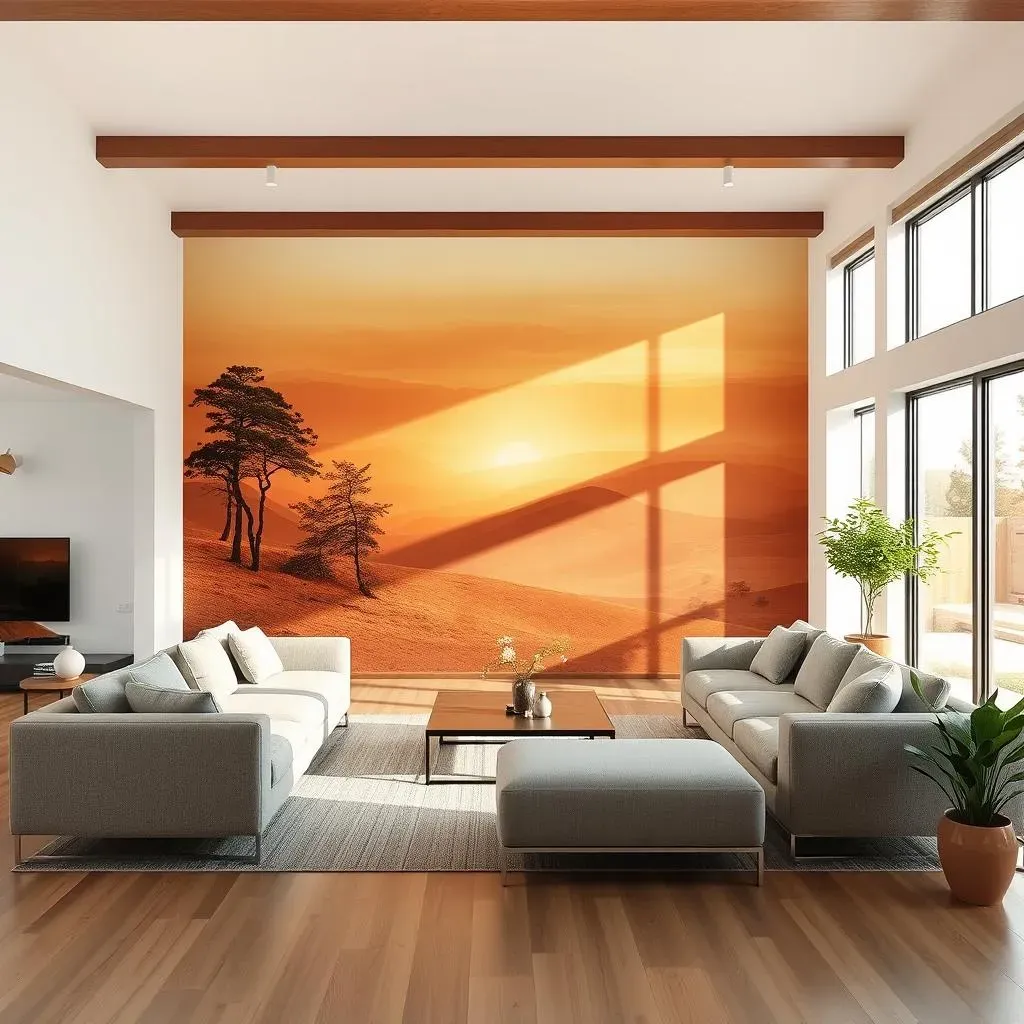Table of Contents
Open-concept living spaces are all the rage, offering a sense of spaciousness and flow. But this expansive design can sometimes feel a little…empty. That's where the magic of accent walls comes in! This article is your ultimate guide to unlocking the potential of your open-concept living room with stunning accent wall ideas. We'll explore how strategically placed accent walls can cleverly define different zones within your space, transforming it from a vast expanse into a series of inviting, functional areas. We’ll dive into choosing the perfect color palette, ensuring it complements your existing décor and enhances the overall ambiance. Beyond paint, we'll uncover a wealth of creative options, from textured wallpapers and eye-catching murals to the use of natural materials like wood and stone. Get ready to discover living room accent wall ideas for open concept spaces that not only look amazing but also maximize your space and amplify your personal style. This is more than just decorating; it's about creating a living room that truly reflects you and how you live. Let's transform that blank canvas into a masterpiece!
Living Room Accent Wall Ideas for Open Concept Spaces: Defining Zones
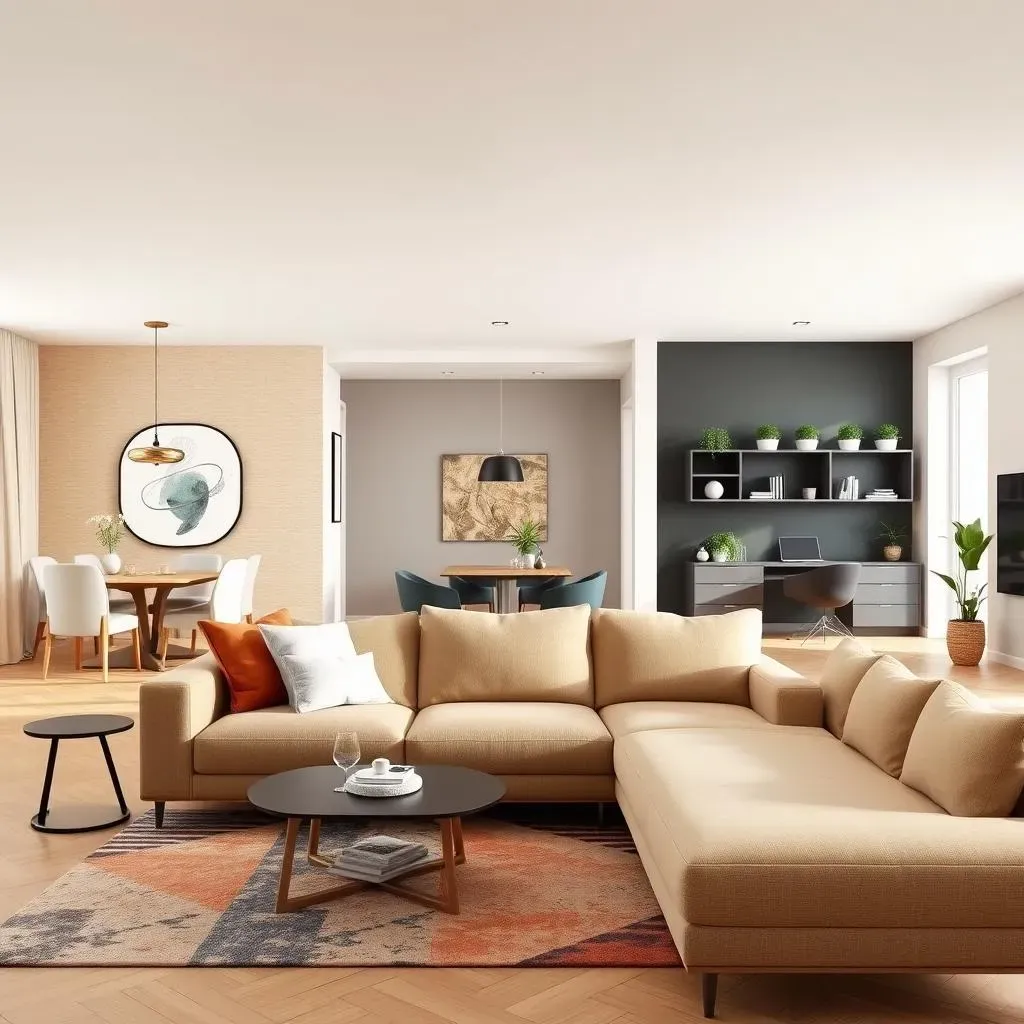
Living Room Accent Wall Ideas for Open Concept Spaces: Defining Zones
Highlighting the Conversation Area
In open-plan homes, the living room often blends seamlessly with the dining area and kitchen. A well-placed accent wall can help define a cozy conversation area, creating a distinct visual boundary without physically separating the spaces. Think of a rich, textured wallpaper in a warm neutral tone, perhaps a subtle pattern, on the wall behind your sofa. This immediately draws the eye and creates a focal point, subtly suggesting a distinct zone for relaxation and socializing. Adding a statement rug in complementary colours further anchors this area, making it feel truly separate from the flow of the rest of the room.
Consider using a different color or texture on the wall behind your sofa to visually separate the seating area from the rest of the open-concept space. For example, a bold color like navy blue or deep green can create a dramatic contrast and make the seating area feel more intimate. Alternatively, you can use a textured wallpaper or paneling to add visual interest and create a focal point. Check out some fireplace accent wall ideas for inspiration; even without a fireplace, the principle is the same.
Accent Wall Material | Effect | Suitable Style |
|---|---|---|
Textured Wallpaper | Creates warmth and intimacy | Traditional, Bohemian |
Bold Paint Color | Adds drama and contrast | Modern, Contemporary |
Wood Paneling | Brings natural warmth and texture | Rustic, Farmhouse |
Defining the Dining Space
Similarly, you can use an accent wall to visually separate your dining area. If your dining table is situated near a wall, consider painting it a contrasting color that complements your dining room furniture. A lighter shade can make the space feel larger and airier, while a darker shade can create a more intimate and sophisticated atmosphere. For instance, a soft, warm grey on the dining area wall will create a tranquil space, easily contrasted with the rest of your open-plan living area. Remember to consider the lighting in this area when choosing your paint color.
Alternatively, a stunning wallpaper featuring a large-scale pattern or a captivating mural can create a dramatic backdrop for your dining table. This can be a beautiful way to add personality and visual interest to your dining area. Consider a mural depicting a nature scene or an abstract design. If you're going for a more modern aesthetic, consider a geometric pattern. For example, a modern accent wall in a bold geometric pattern can add a touch of sophistication and style.
- Use a contrasting color to define the dining area.
- Incorporate a statement wallpaper or mural.
- Consider using lighting to highlight the accent wall.
Creating a Functional Work Zone
Many open-concept homes incorporate a workspace within the living area. An accent wall can be incredibly effective in transforming a small corner into a dedicated and visually appealing workspace. Think about using a chalkboard paint for a fun, practical, and visually interesting accent wall. This allows you to easily write notes, schedules, or even inspirational quotes, turning a functional space into a stylish and personalized element of your home. A simple yet effective way to distinguish your work area!
Alternatively, if you prefer a more sophisticated look, consider using a darker color or a textured wallpaper to create a calming and focused atmosphere. Adding shelves to the wall can provide extra storage for your office supplies. A dark, moody wall can be surprisingly calming, creating a space dedicated to productivity. Adding a little greenery adds life and vibrancy to your work area as well. For more ideas on accent walls with shelves, explore our dedicated guide.
Choosing the Perfect Color Palette for Your Open Concept Living Room Accent Wall
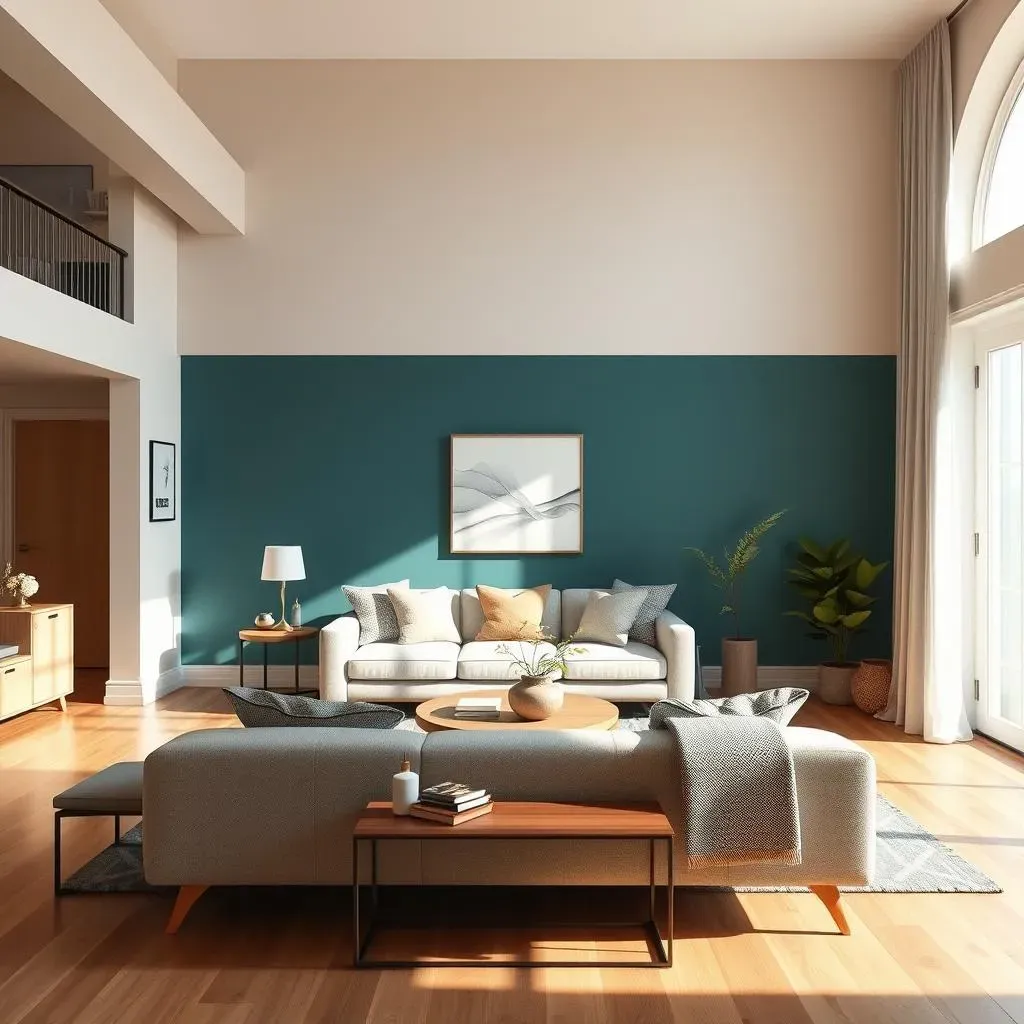
Choosing the Perfect Color Palette for Your Open Concept Living Room Accent Wall
Harmonizing with Your Existing Decor
Picking the right color for your accent wall is key to making your open-concept living room feel cohesive and stylish, not chaotic. The best approach is to start by looking at the colors already present in your space. What are the dominant hues in your furniture, rugs, and artwork? Are you working with a neutral palette or a bolder, more saturated one? Your accent wall color should complement these existing elements, not clash with them. Think of it as adding a beautiful supporting actor to your existing design cast.
For example, if your living room is predominantly neutral with beige walls and natural wood furniture, a warm grey or a soft blue accent wall could add a touch of sophistication without disrupting the overall harmony. However, if your space is filled with vibrant colors, consider choosing an accent wall color that is either a similar shade to your existing colors or a complementary hue. For instance, if you have lots of warm, earthy tones, a deep teal accent wall might look fantastic; for more ideas on how to add color to your living room, check out our guide.
- Identify dominant colors in your existing decor.
- Choose a complementary or analogous color for the accent wall.
- Consider the mood you want to create (calm, energetic, etc.).
Considering the Room's Lighting
Natural light plays a huge role in how a color appears in a room. A color that looks vibrant in bright sunlight might appear dull in a dimly lit space. Before you commit to a color, take some time to observe how the light changes throughout the day in your living room. This will help you choose a color that looks its best in various lighting conditions. Consider the time of day when you most often use the room as well. You might not mind a dark wall in a room you only use in the evening.
Darker colors tend to absorb light, making a room feel smaller and cozier. Lighter colors, on the other hand, reflect light, creating the illusion of more space. If your living room is small or lacks natural light, you might want to opt for a lighter accent wall color. If you have a large, bright living room, a darker color could add depth and drama. For inspiration on accent walls and lighting, explore our other articles.
Light Conditions | Recommended Color Palette |
|---|---|
Bright, Sunny Room | Deep jewel tones, dark neutrals |
Dimly Lit Room | Light, airy colors, pastels |
Mixed Lighting | Medium-toned neutrals, soft shades |
Exploring Color Psychology
The color you choose for your accent wall can significantly impact the mood and atmosphere of your living room. Different colors evoke different emotions and sensations. Warm colors like reds, oranges, and yellows tend to feel energetic and stimulating, while cool colors like blues, greens, and purples tend to be calming and soothing. Consider the feeling you want to create in your living room when selecting your accent wall color. Do you want a space that feels invigorating or relaxing?
For instance, a warm, inviting red accent wall can create a cozy and intimate atmosphere, perfect for a family gathering. A calming blue accent wall, on the other hand, can create a serene space conducive to relaxation and conversation. Experiment with different color samples before making a final decision. Consider painting small test patches on the wall to see how the colors look in different lights. For more ideas and inspiration on creating a specific mood check out our article on minimalist living room accent walls — minimalism often prioritizes a calming atmosphere.
Creative Living Room Accent Wall Ideas for Open Concept Spaces: Beyond Paint
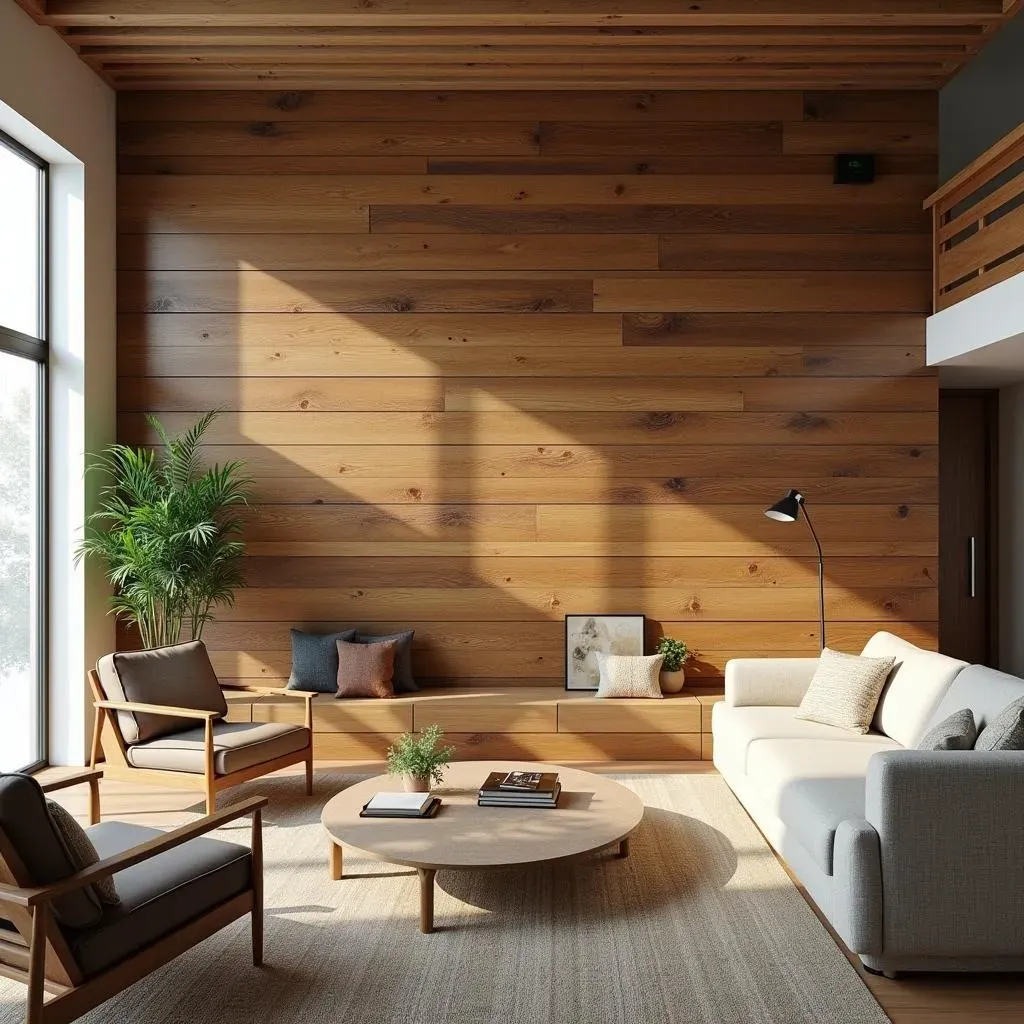
Creative Living Room Accent Wall Ideas for Open Concept Spaces: Beyond Paint
Embracing Texture and Dimension
Let's move beyond simple paint colors and explore the exciting world of textures! Think about incorporating materials like wood, stone, or even brick to create a truly unique accent wall. Reclaimed wood planks, for example, can add rustic charm and warmth to your living room, especially if you're aiming for a farmhouse or bohemian aesthetic. The natural variations in color and grain create a visually interesting focal point, offering a more tactile and dimensional experience than paint alone. This is a fantastic way to add character and a touch of the outdoors in.
Alternatively, a stone accent wall can bring a sense of sophisticated elegance to your space. Whether you opt for smooth, polished stone or a more rustic, rough-hewn look, the natural beauty of stone adds depth and visual interest. Consider using a stone veneer for a more budget-friendly option. If you want to create a more industrial feel, exposed brick can be a striking choice, adding character and texture to your open-concept space. For a more modern look, you could even consider using metallic wall panels for a sleek, contemporary feel. For more ideas on using texture in your living room, check out our dedicated guide.
Material | Style | Effect |
|---|---|---|
Reclaimed Wood | Rustic, Farmhouse, Bohemian | Warmth, character, texture |
Stone Veneer | Elegant, Modern, Traditional | Sophistication, depth, visual interest |
Exposed Brick | Industrial, Rustic, Modern | Character, texture, warmth |
The Power of Pattern and Wallpaper
Wallpaper is a fantastic tool for adding personality and visual interest to any room. In an open-concept space, wallpaper can be particularly effective in defining zones and creating focal points. Choose a bold, large-scale pattern to make a statement or opt for a more subtle, geometric design for a contemporary look. The possibilities are truly endless! Consider patterns that incorporate colors that already exist in your living room to create a cohesive and harmonious look.
Think about the overall style of your living room when choosing your wallpaper pattern. A traditional living room might benefit from a damask or floral pattern, while a modern space might look fantastic with a geometric or abstract design. Don't be afraid to experiment with different patterns and textures to find the perfect fit for your space. Consider using wallpaper to create a feature wall behind your sofa or in your dining area. For some truly inspiring wallpaper ideas for living rooms, explore our dedicated page.
- Large-scale patterns for a bold statement
- Subtle geometric designs for a contemporary feel
- Floral or damask patterns for a traditional look
Creating a Mural or Gallery Wall
For a truly unique and personalized touch, consider creating a mural or gallery wall on your accent wall. A hand-painted mural can be a stunning focal point, adding a touch of artistry and personality to your open-concept living room. If you're not an artist yourself, don't worry! There are plenty of talented muralists out there who can bring your vision to life. A mural can be a beautiful way to showcase your interests or create a visually stunning backdrop for your furniture.
Alternatively, a gallery wall is a fantastic way to showcase your favorite artwork and photographs. By carefully arranging different pieces of art, you can create a visually engaging and dynamic display. Consider using a mix of different sizes, frames, and styles to add visual interest. A gallery wall is a great way to personalize your space and showcase your personality. For more information on creating a stunning gallery wall, check out our helpful guide.
Living Room Accent Wall Ideas for Open Concept Spaces: Maximizing Space and Style
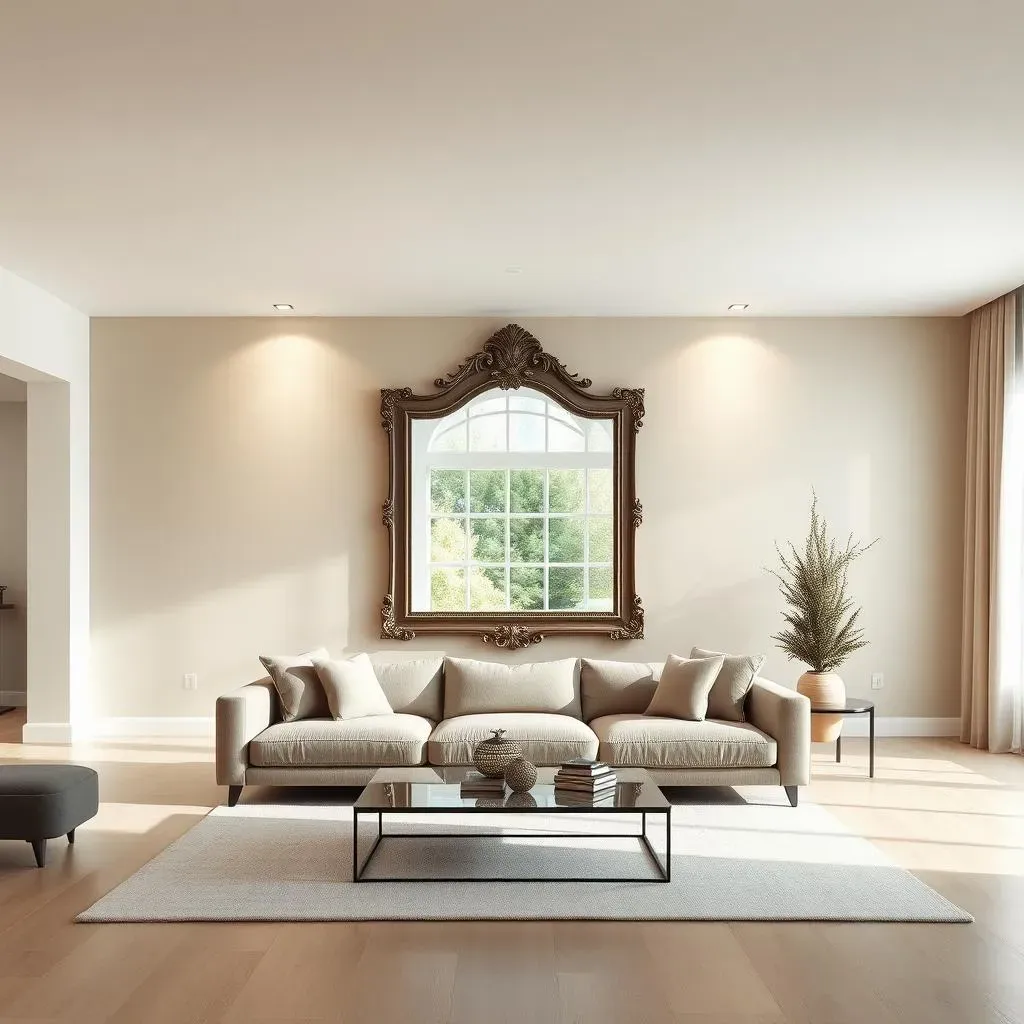
Living Room Accent Wall Ideas for Open Concept Spaces: Maximizing Space and Style
Strategic Placement for Illusion of Space
In open-plan living, the key to maximizing space with an accent wall is strategic placement. Avoid overwhelming the room by choosing a single, prominent wall. The wall behind your sofa is a classic choice, instantly creating a defined seating area and drawing the eye. A lighter color on this wall will make the space feel open and airy, while a darker shade can create a cozy nook. However, if your sofa is positioned against a smaller wall, don't shy away from using that space. The impact of the accent wall will be lessened, but it will still define your seating arrangement from the rest of the open space.
Alternatively, consider using the accent wall to highlight a specific architectural feature. A fireplace, even a small electric one, naturally becomes a focal point. Highlight it with a contrasting color or texture to draw attention and give the illusion of a separate seating area. If you don't have a fireplace, consider a built-in shelving unit or a large window. These architectural features can be emphasized with an accent wall to create a visual anchor and give your room a sense of personality. For more ideas on accent walls in small spaces, explore our dedicated guide.
- Place accent wall behind sofa or other focal point.
- Use lighter colors for an airy feel, darker for coziness.
- Highlight architectural features with the accent wall.
Mirrors and Light: Expanding Your Space
Mirrors are a designer's secret weapon for creating the illusion of more space. In an open-concept living room, a large mirror placed on your accent wall can dramatically expand the room's perceived size and bring in more light. It's especially effective if the mirror reflects a window or a light source. Consider a large, ornate mirror for a more traditional look or a sleek, modern mirror for a contemporary feel. The reflective surface will bounce light around the room, making it feel brighter and more spacious.
Furthermore, strategic lighting can enhance the impact of your accent wall and make the room feel larger. Install recessed lighting or spotlights to highlight the wall's texture and color, drawing the eye upwards and creating a sense of height. If your accent wall features artwork or a mirror, consider adding additional lighting to highlight these elements. Careful lighting can not only make the space feel larger, but also creates a more welcoming atmosphere. For more ideas on working with mirrors and accent walls, check out our other articles.
Technique | Effect | Style |
|---|---|---|
Large Mirror | Expands space, increases light | Modern, Traditional |
Recessed Lighting | Highlights texture, adds depth | Modern, Contemporary |
Spotlights | Focuses attention, creates drama | Modern, Traditional |
